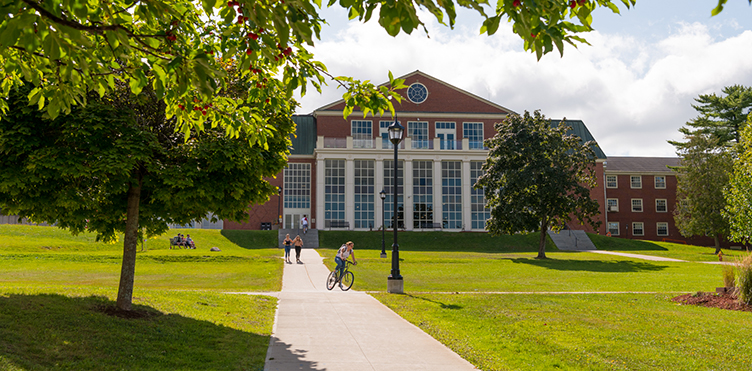Plans and certifications
UNB Sustainability engaged with the campus community to create a Climate Change Action Plan and a Campus Sustainability Plan for both of our campuses (Fredericton and Saint John). These plans are sister documents that work together to help reach our vision and goals.
UNB’s Climate Change Action Plan and Campus Sustainability Plan also support UNB's mission “to inspire and educate our people to become problem solvers and leaders in the world, undertake research that addresses societal and scientific challenges, and engage with our partners to build a more just, sustainable and inclusive world.”
Climate Change Action Plan
From 2016 to 2020, UNB Sustainability engaged with the campus community to create a UNB's Climate Change Action Plan. The plan was published in 2020 and is currently guiding UNB towards becoming a carbon neutral institution by 2050, and adapting to climate change. UNB's Climate Change Action Plan is focused on five areas on our two campuses.
Campus Sustainability Plan
While the UNB Climate Change Action Plan focuses on our goal of achieving carbon neutrality by 2050, the UNB Campus Sustainability Plan focuses on achieving a high sustainability rating, specifically a STARS Gold rating by 2030.
Certifications
STARS
The Sustainability Tracking, Assessment and Rating System (STARS), a program of the Association for the Advancement of Sustainability in Higher Education (AASHE), is used for measuring sustainability at UNB. STARS is a transparent, self-reporting, sustainability assessment tool for universities and colleges, that has been used by over 900 institutions worldwide.
STARS measures four general categories of sustainability: academic, engagement, planning and administration, and operations. STARS has five possible ratings, increasingly they are STARS Reporter, Bronze, Silver, Gold and Platinum. UNB first submitted to STARS in 2017 for the Fredericton campus and received a Silver rating. UNB submitted to STARS again and received another Silver rating for the Fredericton campus in 2020 and a Silver rating for the Saint John campus in 2021. Review the STARS Report Archive to see UNB's previous STARS reports.
The UNB Sustainability team is currently working on a combined Fredericton and Saint John campus submission to STARS. The STARS rating that UNB receives gives recognition of our sustainability efforts, representing, not replacing, the goal of becoming a sustainable institution.
LEED
Leadership in Energy and Environmental Design (LEED) is an industry building rating system that is recognized as the international mark of excellence for green buildings in over 132 countries. The LEED rating system evaluates six aspects of building design and construction: site development, water efficiency, energy efficiency, materials used, indoor environmental quality, and innovation. There are four possible levels of certification through LEED: certified, silver, gold and platinum.
The Hans W. Klohn Commons building (opened in September 2011) on the University of New Brunswick Saint John campus has achieved LEED gold certification. The design and construction of the Commons has resulted in a number of environmental efficiencies and cost savings to the university, which ultimately led to the gold certification. These include:
- 140 tonnes of CO2 per year of GHG emissions saved, the equivalent to taking 30 SUVs off the road;
- 58 per cent reduction in potable water use, equivalent to 1,800,000L per year equivalent or almost 6,500 bathtubs of water each year. LEED requires a minimum 20 per cent reduction in water use;
- 47 per cent reduction in energy costs, 380,000 kWh per year of energy savings equivalent to the energy used by 13 single-family dwellings. LEED requires at least a 25 per cent consumption reduction over the Model National Energy Code for Buildings referenced to building;
- 150 tonnes of construction waste diverted from the landfill or 93.7 per cent of waste diversion from landfills. LEED requires a 50 per cent diversion; and
- 90 per cent of indoor areas have direct sightlines to daylight and views.

